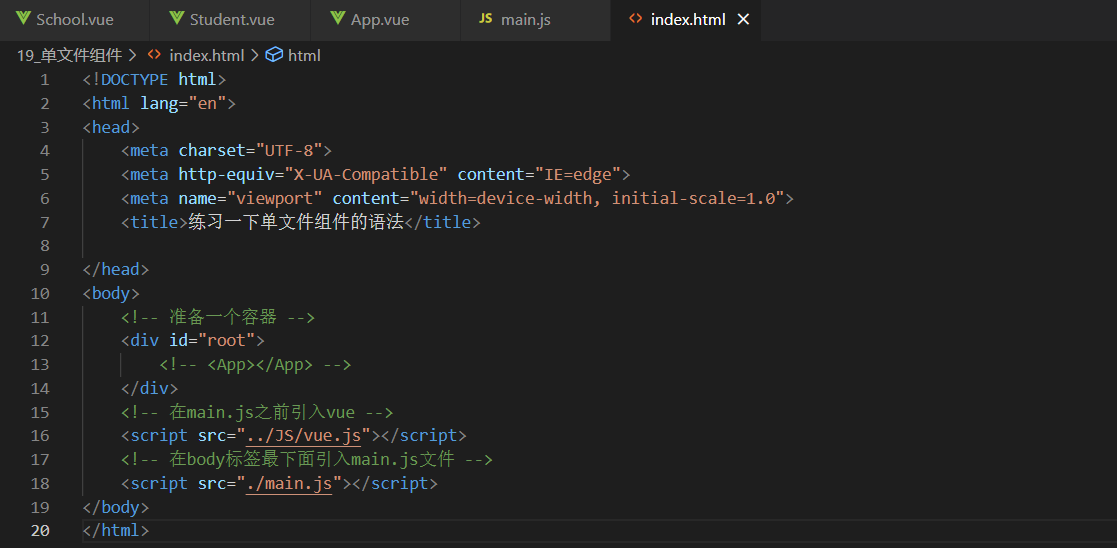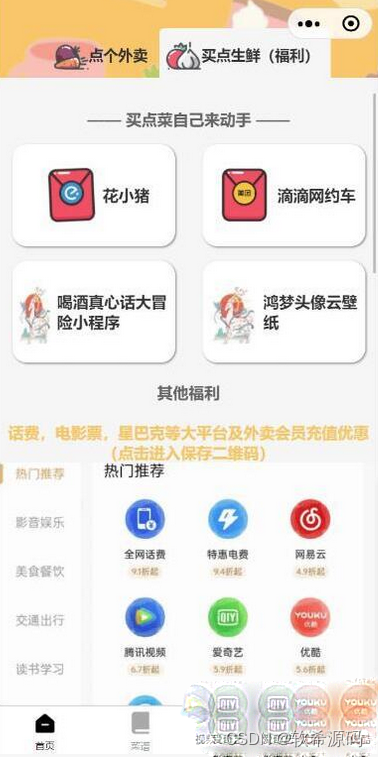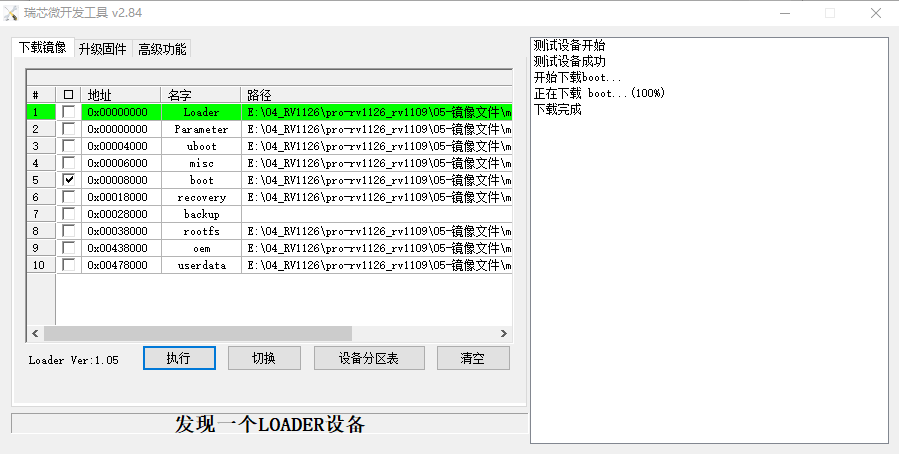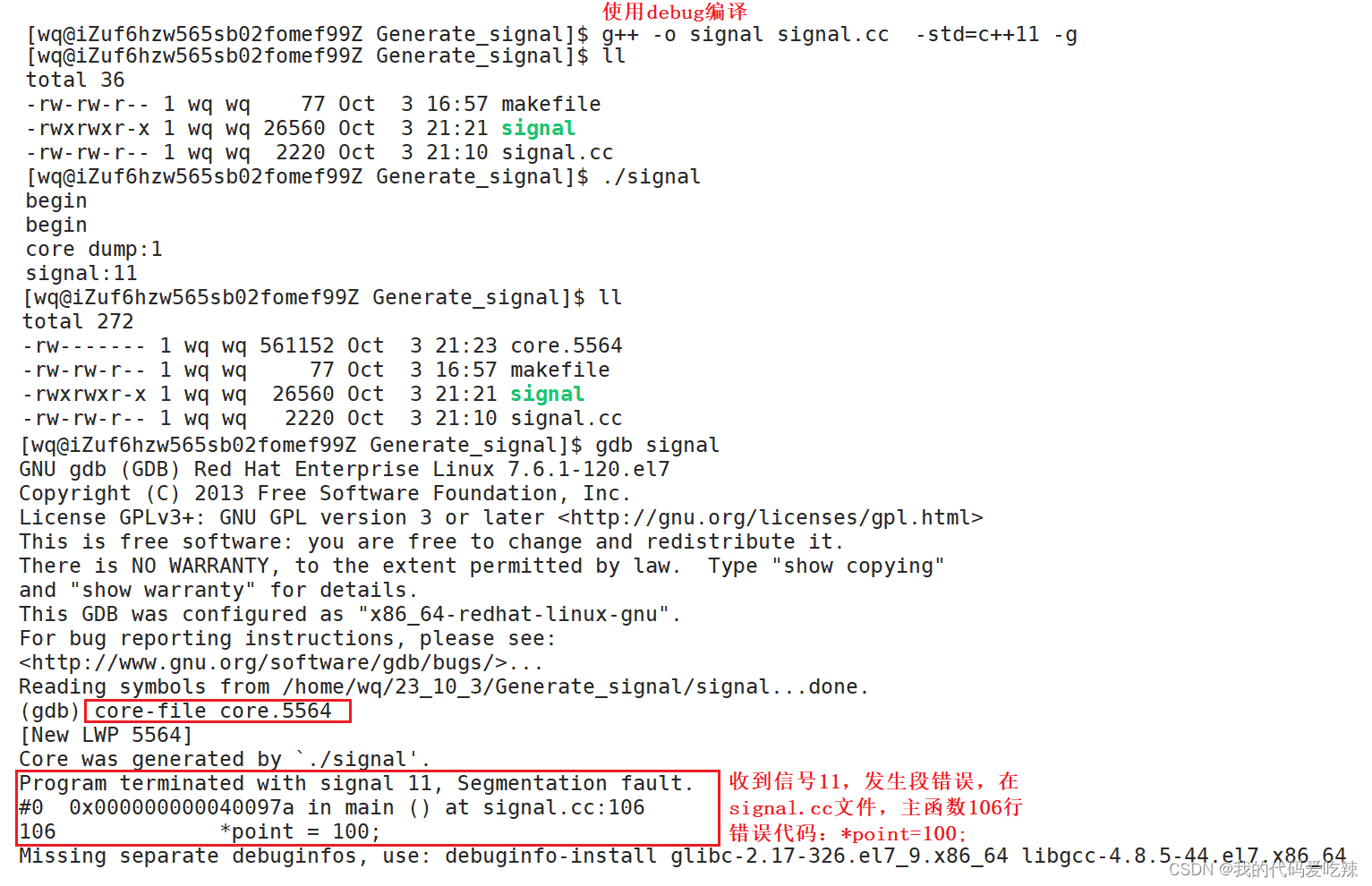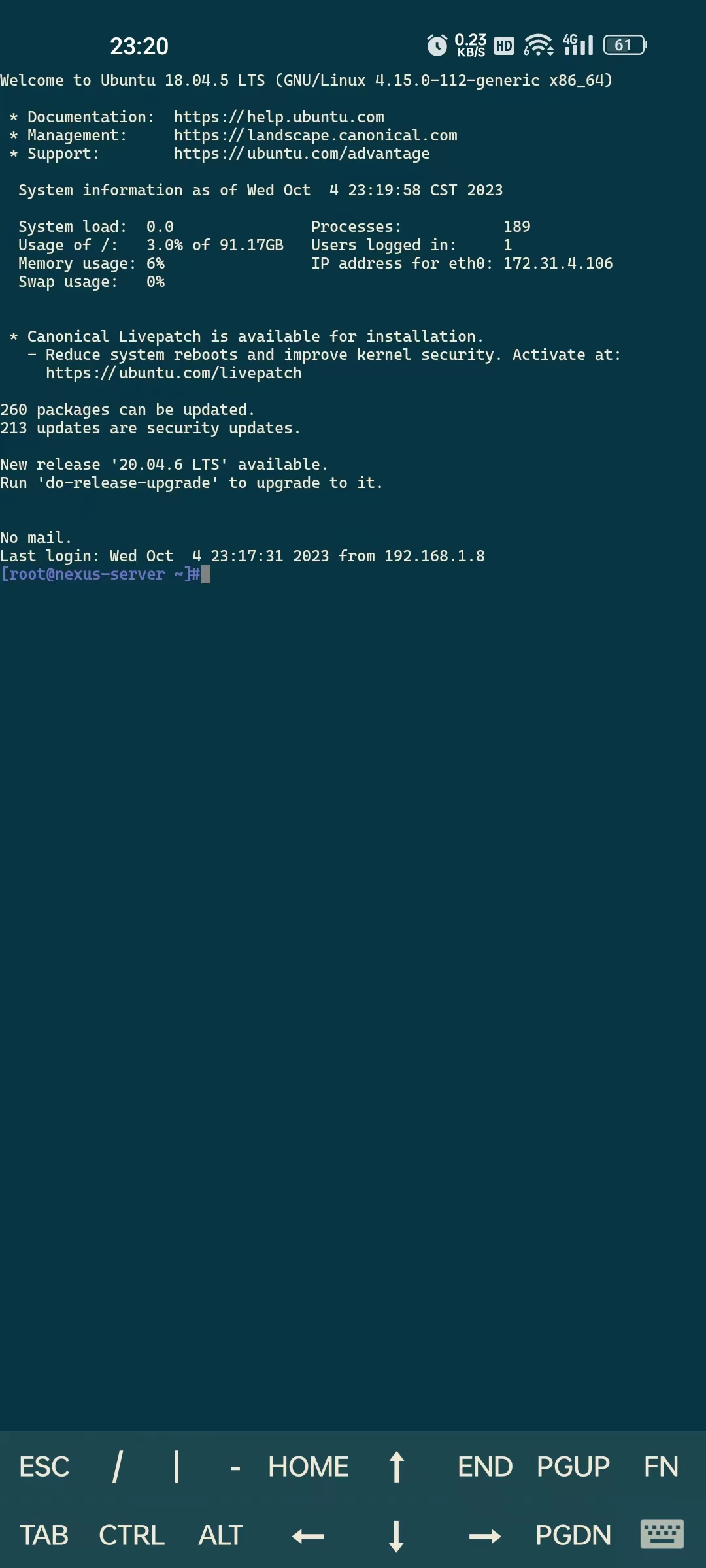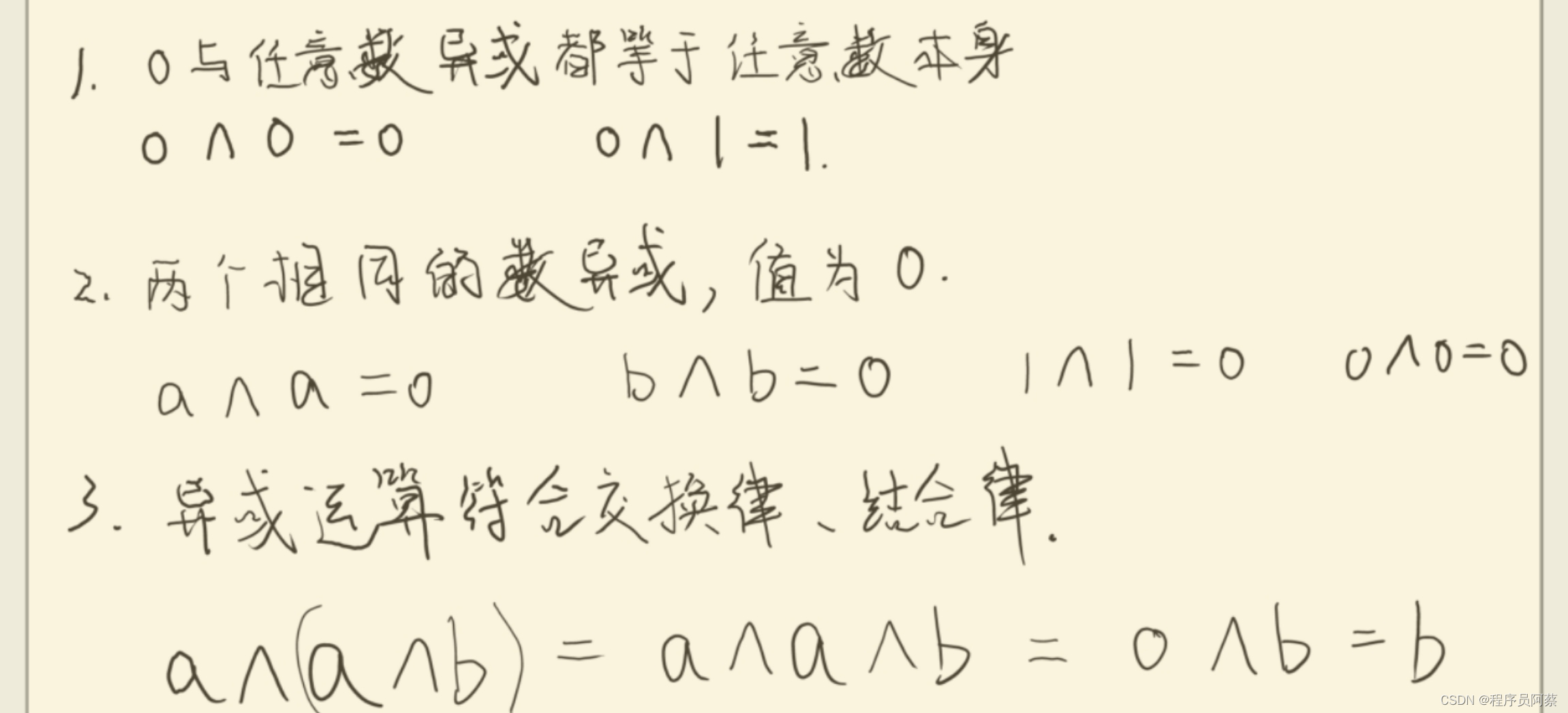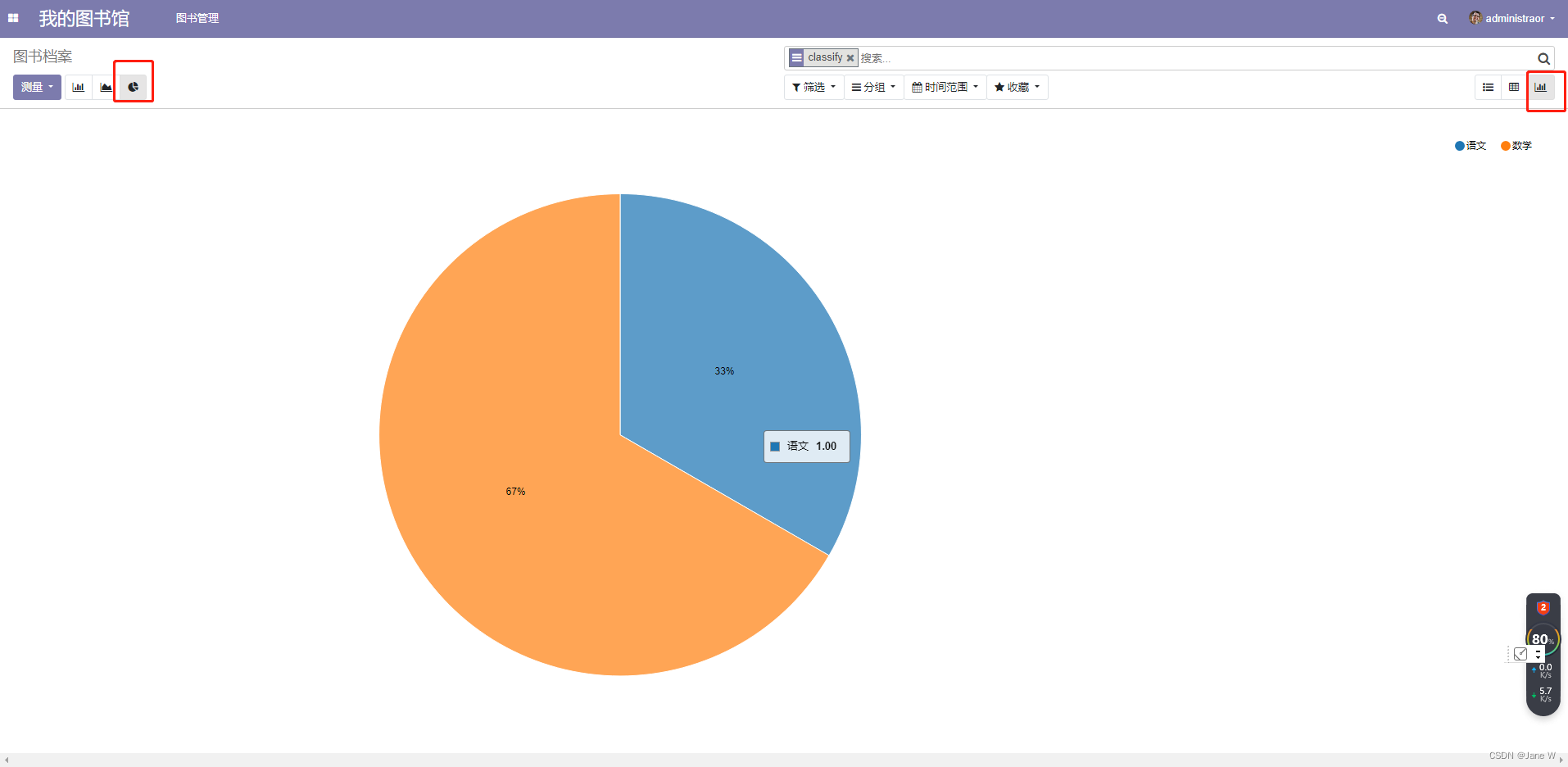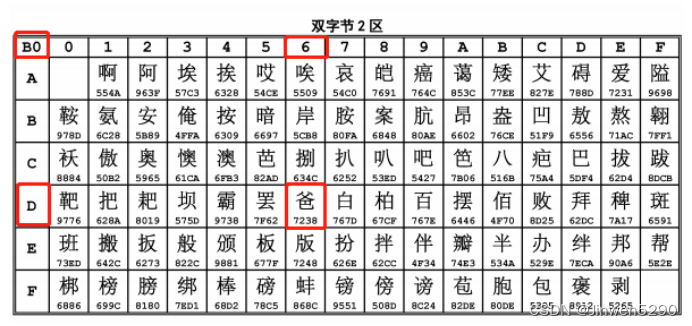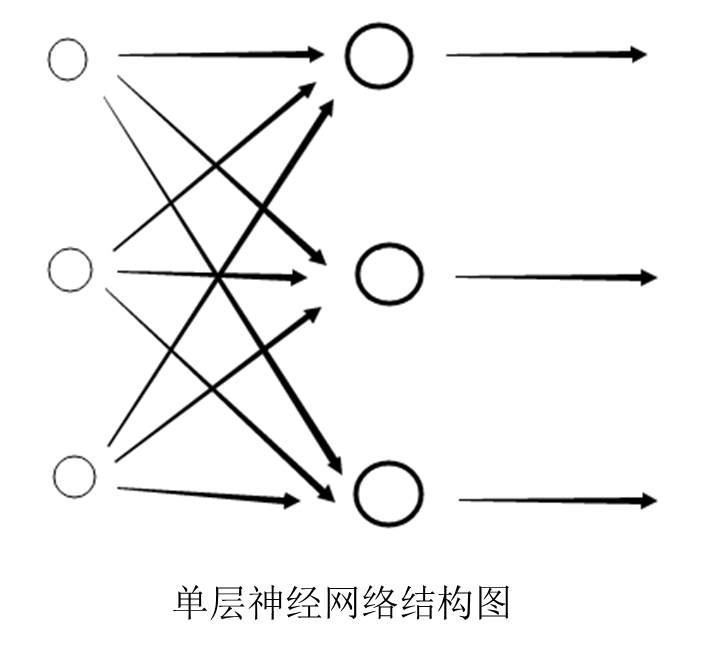Vue组件化编程
- 1 对组件的理解
- 2 非单文件组件
- 2.1 基本使用
- 2.2 几个注意点
- 2.3 组件的嵌套
- 2.4 VueComponent构造函数
- 2.5 一个重要的内置关系
- 3 单文件组件
1 对组件的理解
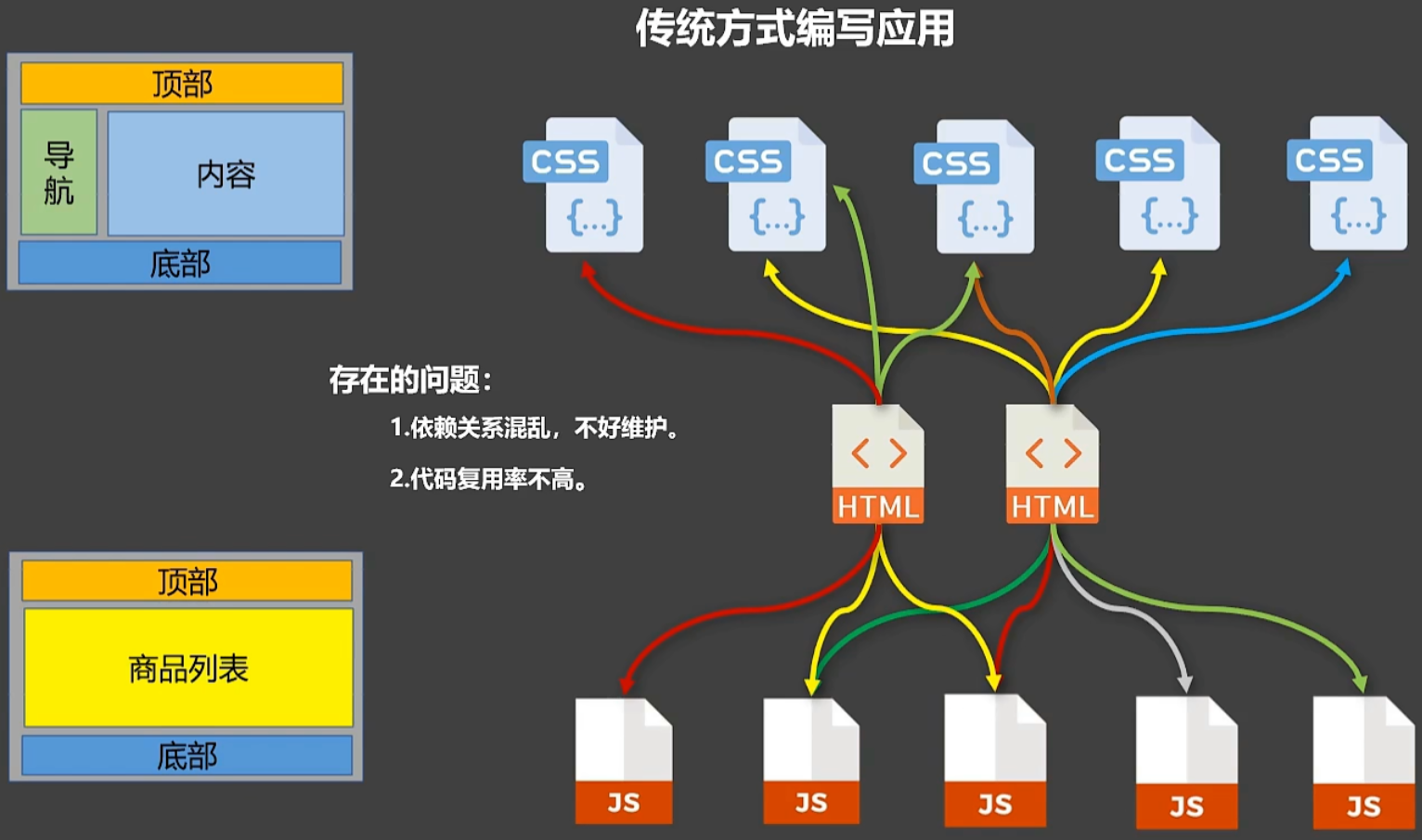
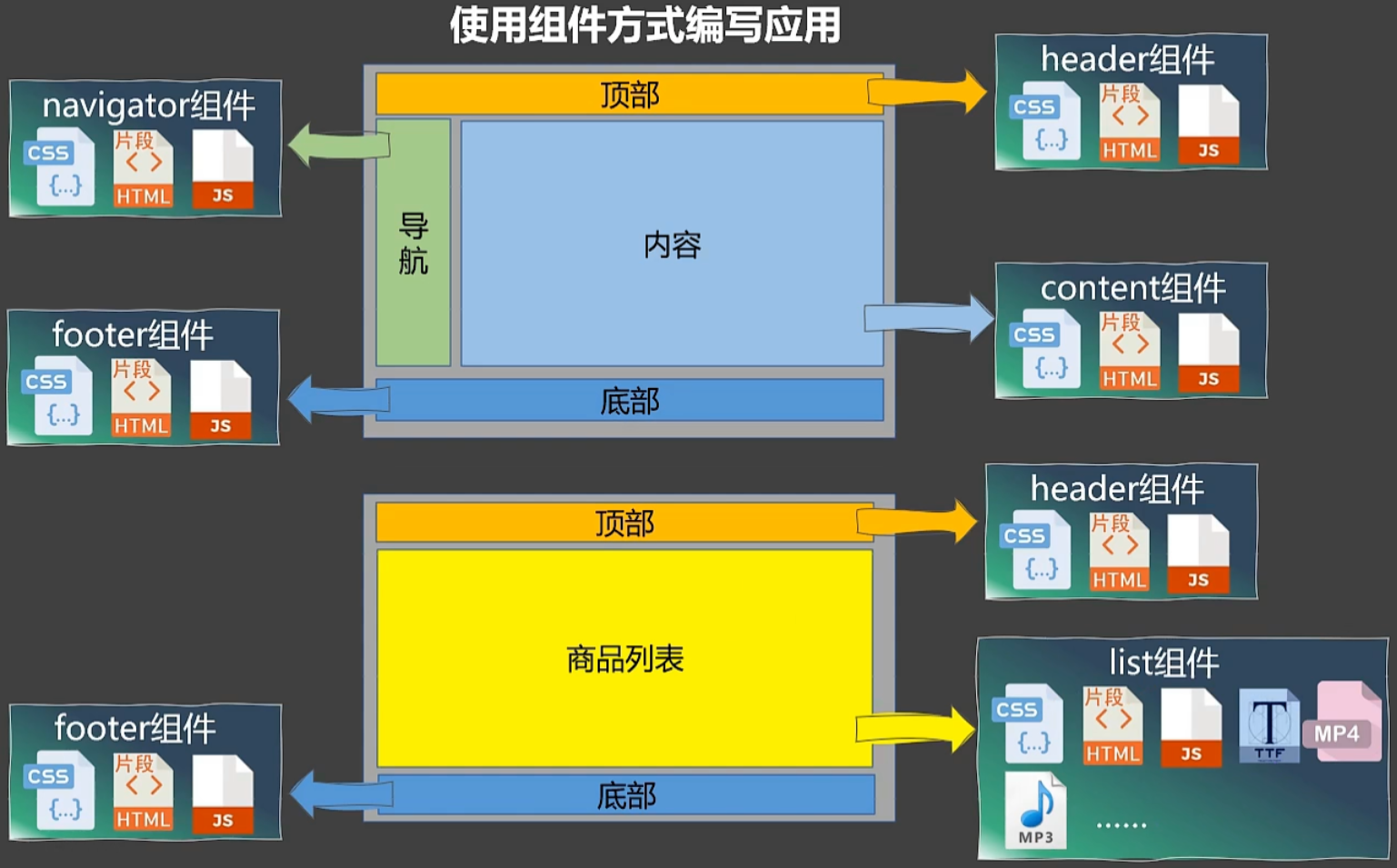
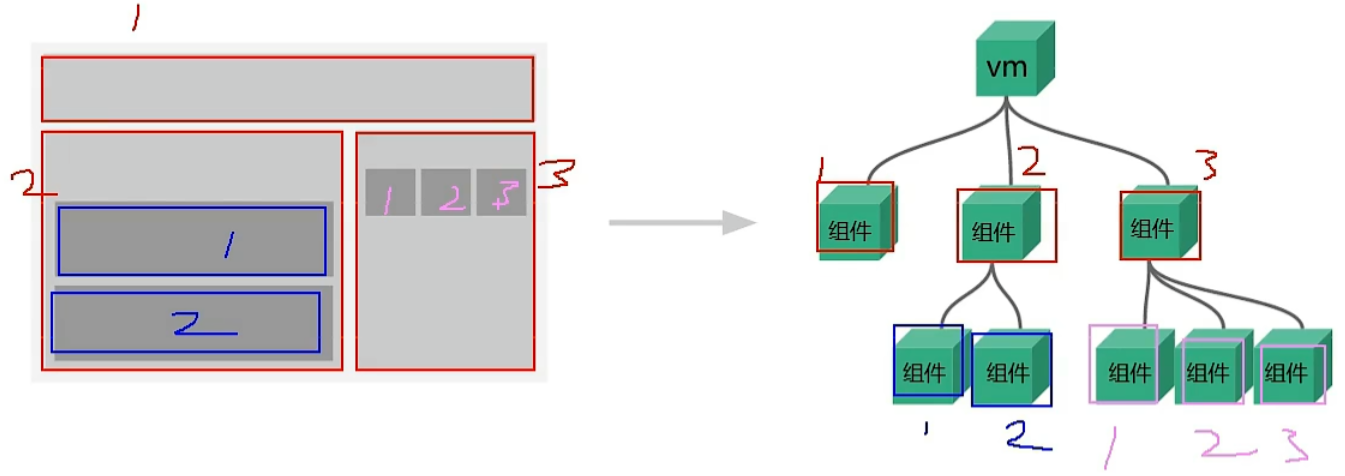
- 组件:实现应用中局部功能代码和资源的集合。
- 优点:文件好维护;依赖关系不混乱;复用率高。
- 模块与组件:
(1.1)模块理解:向外提供特定功能的 js 程序, 一般就是一个 js 文件
(1.2)使用模块原因:js 文件很多很复杂
(1.3)模块作用:复用 js, 简化 js 的编写, 提高 js 运行效率
(2.1)组件理解:用来实现局部(特定)功能效果的代码集合(html/css/js/image……)
(2.2)使用组件原因:一个界面的功能很复杂
(2.3)组件作用:复用编码, 简化项目编码, 提高运行效率 - 模块化与组件化:
(1)当应用中的 js 都以模块来编写的, 那这个应用就是一个模块化的应用。
(2)当应用中的功能都是多组件的方式来编写的, 那这个应用就是一个组件化的应用。
2 非单文件组件
- 定义:一个文件中包含有n个组件

2.1 基本使用
- Vue中使用组件的三大步骤:
1> 定义组件(创建组件)
2> 注册组件
3> 使用组件(写组件标签) - 如何定义一个组件?
1> 使用Vue.extend(options)创建,其中options和new Vue(options)时传入的那个options几乎一样,但也有点区别;
2>区别如下:
① el不要写,为什么? ——— 最终所有的组件都要经过一个vm的管理,由vm中的el决定服务哪个容器。
② data必须写成函数,为什么? ———— 避免组件被复用时,数据存在引用关系。
3> 备注:使用template可以配置组件结构。 - 如何注册组件?
1> 局部注册:靠new Vue的时候传入components选项
2> 全局注册:靠Vue.component('组件名',组件) - 编写组件标签:
<school></school>
<!DOCTYPE html>
<html lang="en">
<head><meta charset="UTF-8"><meta http-equiv="X-UA-Compatible" content="IE=edge"><meta name="viewport" content="width=device-width, initial-scale=1.0"><title>基本使用</title><script src="../JS/vue.js"></script>
</head>
<body><div id="root"><!-- 第三步:编写组件标签 --><!-- <xuexiao></xuexiao> --><hello></hello><hr/><school></school><hr/><!-- <xuesheng></xuesheng> --><student></student></div><!-- 仅仅为了全局注册组件而写 可忽略 --><div id="root2"><hello></hello></div></body>
<script>Vue.config.productionTip = false// 第一步:创建组件// 创建school组件const school = Vue.extend({// el:'#root', // 组件定义时,一定不要写el配置项,因为最终所有的组件都要被一个vm管理,由vm决定服务于哪个容器template:`<div><h2>学校名称:{{schoolName}}</h2><h2>学校地址:{{address}}</h2><button @click="showName">点我提示学校名</button></div>`,data(){ // 创建组件时,data必须使用函数式,否则会报错return {schoolName:'霍格沃茨魔法学院',address:'苏格兰高地'}},methods:{showName(){alert(this.schoolName)}}})// 创建student组件const student = Vue.extend({template:`<div><h2>学生姓名:{{studentName}}</h2><h2>学生年龄:{{age}}</h2></div>`,data(){return {studentName:'小王',age:18}}})// 创建hello组件 仅仅为了全局注册组件而写 可忽略const hello = Vue.extend({template:`<div><h2>你好啊!{{name}}</h2></div>`,data(){return {name:'Tom'}}})// 注册组件(全局注册)Vue.component('hello',hello)// 创建vmnew Vue({el: '#root',// 第二步:注册组件(局部注册)components:{// xuexiao:school,// school:school,// 可简写为:school,// xuesheng:studentstudent}})// 仅仅为了全局注册组件而写 可忽略new Vue({el: '#root2',})
</script>
</html>

2.2 几个注意点
<!DOCTYPE html>
<html lang="en">
<head><meta charset="UTF-8"><meta http-equiv="X-UA-Compatible" content="IE=edge"><meta name="viewport" content="width=device-width, initial-scale=1.0"><title>几个注意点</title><script src="../JS/vue.js"></script>
</head>
<body><!--总结几个注意点:1.关于组件名:一个单词组成:第一种写法(首字母小写):school第二种写法(首字母大写):School多个单词组成:第一种写法(kebab-case命名):my-school第二种写法(CamelCase命名):MySchool (需要Vue脚手架支持)备注:(1).组件名尽可能回避HTML中已有的元素名称,例如:h2、H2都不行。(2).可以使用name配置项指定组件在开发者工具中呈现的名字。2.关于组件标签:第一种写法:<school></school>第二种写法:<school/>备注:不用使用脚手架时,<school/>会导致后续组件不能渲染。3.一个简写方式:const school = Vue.extend(options) 可简写为:const school = options--><div id="root"><h1>{{msg}}</h1><!-- 使用组件 --><school></school><!-- <school/> 此写法得确保在脚手架情况下使用 --></div>
</body>
<script>Vue.config.productionTip = false// 定义组件const school = Vue.extend({name:'xuexiao', // 可以使用name配置项指定组件在开发者工具中呈现的名字template:`<div><h2>学校名字:{{schoolName}}</h2><h2>学校地址:{{address}}</h2> </div>`,data() {return {schoolName:'霍格沃兹魔法学院',address:'苏格兰高地'}}})// 可简写为:/* const school = {name:'xuexiao', // 可以使用name配置项指定组件在开发者工具中呈现的名字template:`<div><h2>学校名字:{{schoolName}}</h2><h2>学校地址:{{address}}</h2> </div>`,data() {return {schoolName:'霍格沃兹魔法学院',address:'苏格兰高地'}}} */new Vue({el:'#root',data:{msg:'欢迎学习Vue!'},// 局部注册组件components: {// 若组件名是多个单词写法一:// 'my-school':school // 加引号、单词之间用短横杠// 若组件名是多个单词写法二:// MySchool:school // 每个单词首字母大写 但前提是在脚手架环境中写// school:schoolschool}})
</script>
</html>

2.3 组件的嵌套
- app为一人(vm)之下,万人(所有其他组件)之上
<!DOCTYPE html>
<html lang="en">
<head><meta charset="UTF-8"><meta http-equiv="X-UA-Compatible" content="IE=edge"><meta name="viewport" content="width=device-width, initial-scale=1.0"><title>组件的嵌套</title><script src="../JS/vue.js"></script>
</head>
<body><div id="root"><!-- 使用组件一 --><!-- <app></app> --></div>
</body>
<script>Vue.config.productionTip = false// 定义student组件(子)const student = Vue.extend ({template:`<div><h2>学生姓名:{{name}}</h2><h2>学生年龄:{{age}}</h2> </div>`,data() {return {name:'小王',age:18}}})// 定义school组件(父)const school = Vue.extend ({template:`<div><h2>学校名字:{{name}}</h2><h2>学校地址:{{address}}</h2><student></student> </div>`,data() {return {name:'霍格沃兹魔法学院',address:'苏格兰高地'}},// 要实现嵌套// 注册组件(局部)components: {student}})// 定义hello组件(与school组件平级)const hello = Vue.extend({template:`<h1>{{msg}}</h1>`,data() {return {msg:'欢迎来到小王的博客!'}}})// 定义app组件const app = Vue.extend ({template:`<div><hello></hello><school></school></div>`,components:{school,hello}})// 创建vmnew Vue({// 使用组件二template:`<app></app>`,el:'#root',// 注册组件(局部)components:{app}})
</script>
</html>

2.4 VueComponent构造函数
- school组件本质是一个名为
VueComponent的构造函数,且不是程序员定义的,是Vue.extend生成的。 - 我们只需要写
<school/>或<school></school>,Vue解析时会帮我们创建school组件的实例对象,即Vue帮我们执行的:new VueComponent(options)。 - 特别注意:每次调用
Vue.extend,返回的都是一个全新的VueComponent! - 关于this指向:
1> 组件配置中:data函数、methods中的函数、watch中的函数、computed中的函数,它们的this均是VueComponent实例对象(vc)。
2>new Vue(options)配置中:data函数、methods中的函数、watch中的函数、computed中的函数,它们的this均是Vue实例对象(vm)。 VueComponent的实例对象,以后简称vc(也可称之为:组件实例对象)。
Vue的实例对象,以后简称vm。
<!DOCTYPE html>
<html lang="en">
<head><meta charset="UTF-8"><meta http-equiv="X-UA-Compatible" content="IE=edge"><meta name="viewport" content="width=device-width, initial-scale=1.0"><title>VueComponent</title><script src="../JS/vue.js"></script>
</head>
<body><div id="root"><!-- 使用组件 --><school></school><hello></hello></div>
</body>
<script>Vue.config.productionTip = false// 定义school组件const school = Vue.extend({template:`<div><h2>学校名字:{{name}}</h2><h2>学校地址:{{address}}</h2><button @click="showName">点我提示学校名</button> </div>`,data() {return {name:'霍格沃兹魔法学院',address:'苏格兰高地'}},methods: {showName(){console.log('showName',this) // 此时的this是VueComponent实例对象(vc)}}})// 定义test组件const test = Vue.extend({template:`<span>atguigu</span>`})//定义hello组件const hello = Vue.extend({template:`<div><h2>{{msg}}</h2><test></test> </div>`,data(){return {msg:'你好啊!'}},components:{test}})// console.log('@',school)// console.log('#',hello)// 创建vmconst vm = new Vue({el:'#root',// 注册组件components: {school,hello}})
</script>
</html>

2.5 一个重要的内置关系
- 一个重要的内置关系:
VueComponent.prototype.__proto__ === Vue.prototype - 为什么要有这个关系:让组件实例对象(vc)可以访问到 Vue原型上的属性、方法。
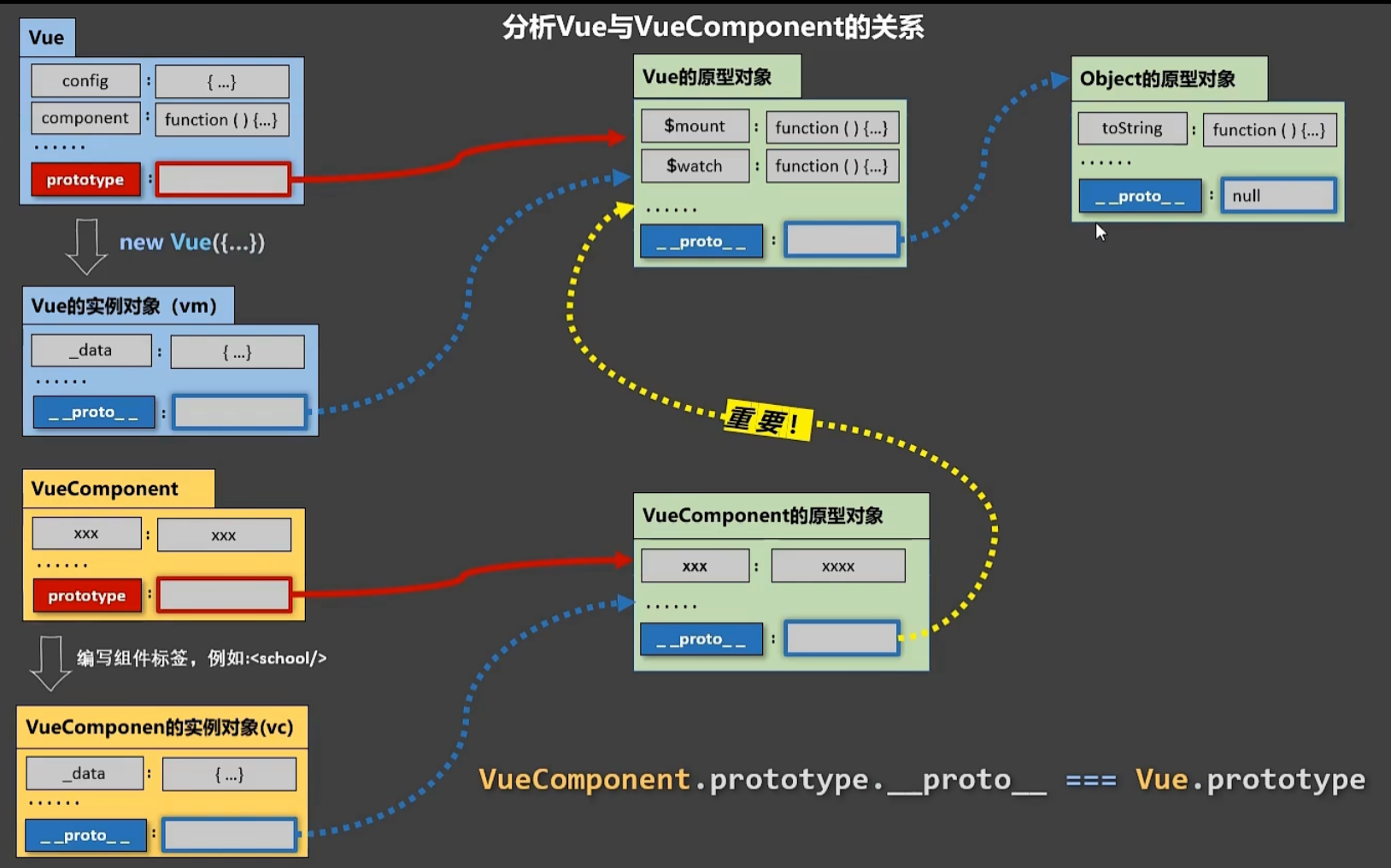
<!DOCTYPE html>
<html lang="en">
<head><meta charset="UTF-8"><meta http-equiv="X-UA-Compatible" content="IE=edge"><meta name="viewport" content="width=device-width, initial-scale=1.0"><title>一个重要的内置关系</title><script src="../JS/vue.js"></script>
</head>
<body><div id="root"><school></school></div>
</body>
<script>Vue.config.productionTip = falseVue.prototype.x = 99 // 此时vm.x = 99// 定义school组件const school = Vue.extend ({template:`<div><h2>学校名字:{{name}}</h2><h2>学校地址:{{address}}</h2><button @click="showX">点我输出x</button> </div>`,data() {return {name:'霍格沃兹魔法学院',address:'苏格兰高地'}},methods:{showX(){console.log(this.x); // this指向vc 输出值为99 也就是vc.x = 99}}})// 创建vmconst vm = new Vue({el: '#root',data: {msg:'你好'},components: {school}})// 验证VueComponent.prototype.__proto__ === Vue.prototype// console.log(school.prototype.__proto__ === Vue.prototype); // true// 定义一个构造函数/* function Demo(){this.a = 1this.b = 2}// 创建一个Demo的实例对象const d = new Demo()console.log(Demo.prototype); // 显示原型属性console.log(d.__proto__); // 隐式原型属性console.log(Demo.prototype === d.__proto__); // true// 程序员通过显示原型属性操作原型对象,追加一个x属性,值为99Demo.prototype.x = 99console.log('@',d.x); // 99 */
</script>
</html>
3 单文件组件
- 定义:一个文件中只包含有一个组件。

- 快捷键:输入
< + v再按Enter - School.vue:
<template><!-- 组件的结构 --><!-- template标签里面必须有一个div标签 否则会标红 --><div class="demo"><h2>学校名字:{{name}}</h2><h2>学校地址:{{address}}</h2><button @click="showName">点我提示学校名</button></div>
</template><script>// 组件交互相关的代码(数据、方法等)// export const school = Vue.extend({ // es6分别暴露(多行暴露),在引用时需要用对象来引用// 此时使用默认暴露// export default Vue.extend({ // 再对此写法进行简化export default {name:'School',data() {return {name:'霍格沃兹魔法学院',address:'苏格兰高地'}},methods: {showName(){alert(this.name)}}}// export {school} // es6统一暴露// export default school //es6默认暴露,一个js文件只能有一个默认暴露,默认暴露的可以是一个常量、函数、对象
</script><style>/* 组件的样式 */.demo {background-color:orange;}
</style>
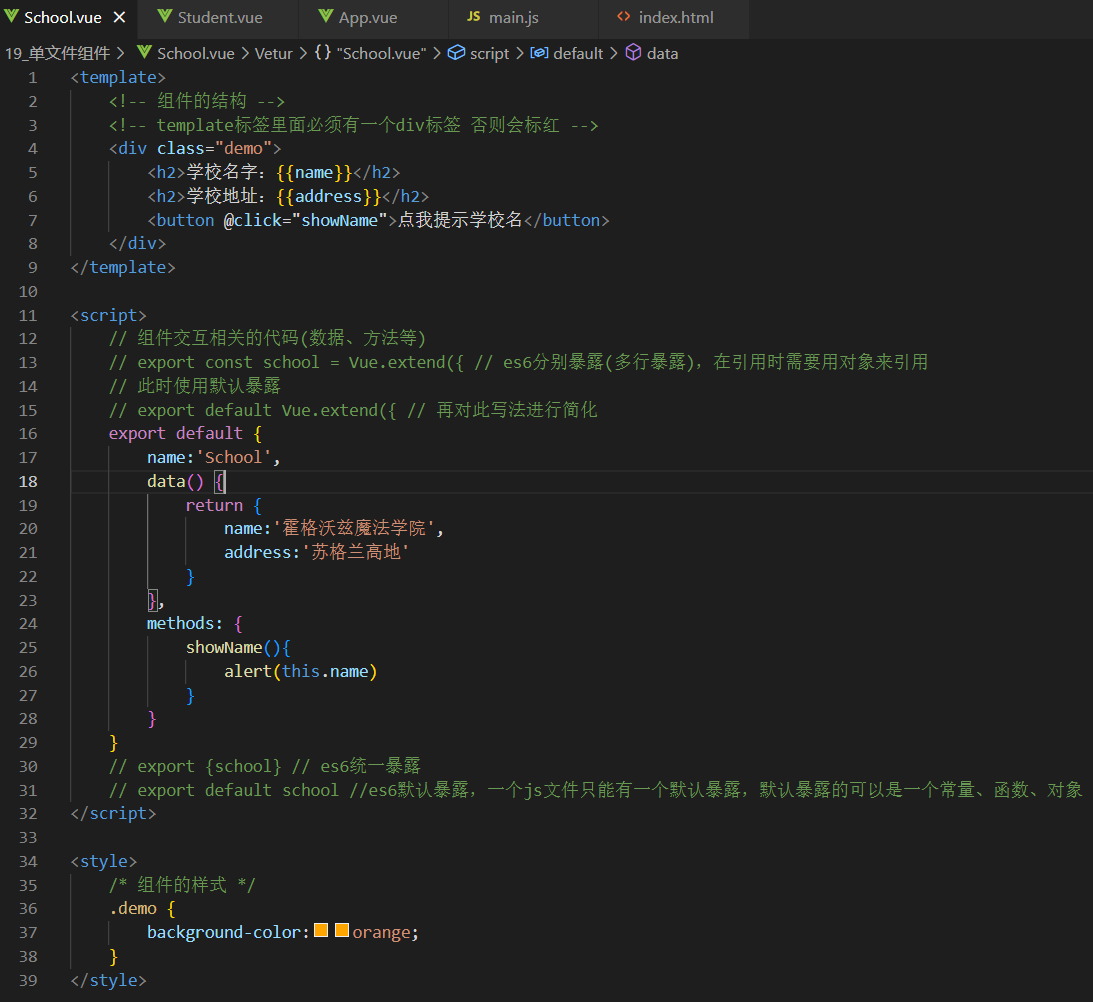
- Student.vue:
<template><div><h2>学生姓名:{{name}}</h2><h2>学生年龄:{{age}}</h2></div>
</template><script>export default {name:'Student',data() {return {name:'小王',age:18}},}
</script>

- App.vue:
<template><div><School></School><Student></Student></div>
</template><script>// 引入School和Student组件import School from './School.vue' // es6默认暴露对应的引用方法import Student from './Student.vue'export default {name:'App',components: {School,Student}}
</script>
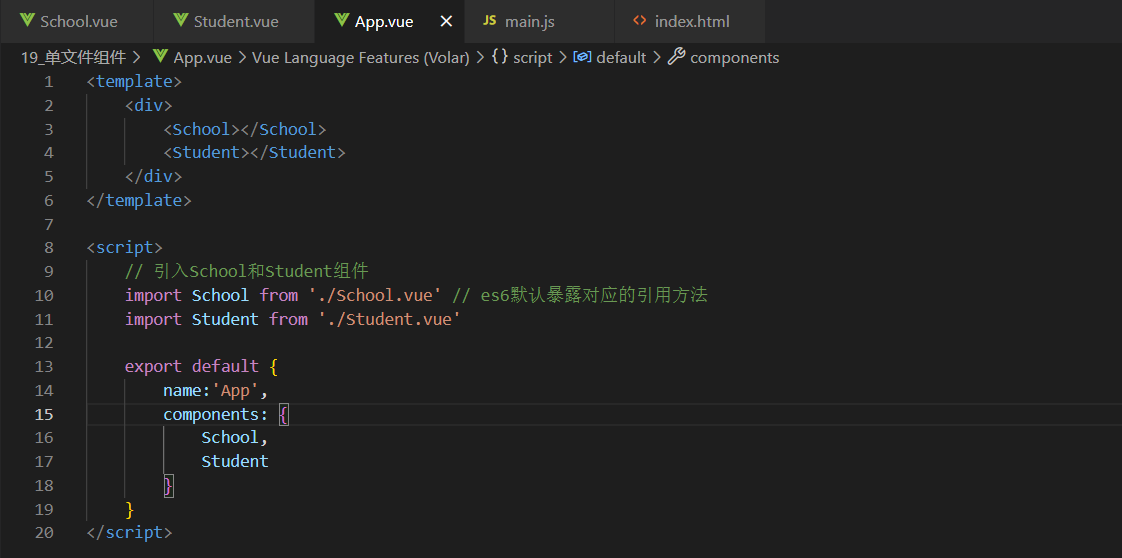
- main.js:
import App from './App.vue' // 引入App.vue// 创建vm
new Vue ({el:'#root',template:`<App></App>`, // 此处写了 index.html容器中就不需要再写components:{App}
})

- index.html:
<!DOCTYPE html>
<html lang="en">
<head><meta charset="UTF-8"><meta http-equiv="X-UA-Compatible" content="IE=edge"><meta name="viewport" content="width=device-width, initial-scale=1.0"><title>练习一下单文件组件的语法</title></head>
<body><!-- 准备一个容器 --><div id="root"><!-- <App></App> --></div><!-- 在main.js之前引入vue --><script src="../JS/vue.js"></script><!-- 在body标签最下面引入main.js文件 --><script src="./main.js"></script>
</body>
</html>
